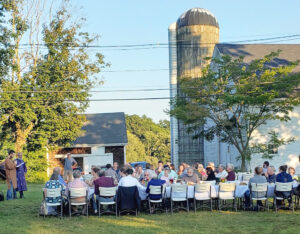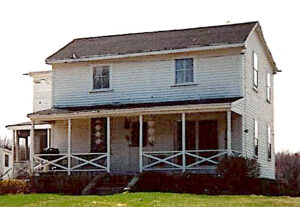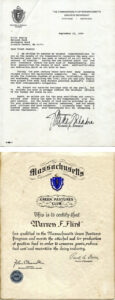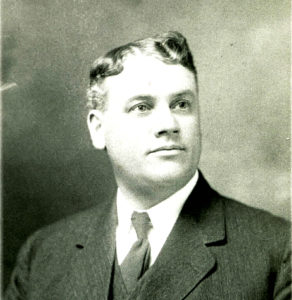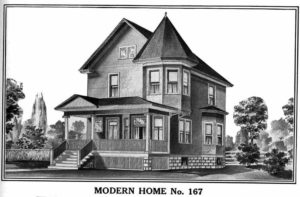By Rick Wiggin
Contrary to popular Lincoln myth, the town’s Minute Men did not muster in the field at the corner of Sandy Pond and Baker Bridge Roads. The mistaken identity of that field as the “Muster Field” came about from a misreading of Lincoln’s history and from the politics of the town’s acquisition of that field in 1983.
In the early hours of April 19, 1775, Lincoln’s Minute Men and militia company mustered on the Town Common near to the meetinghouse, where the town stored its gunpowder and military supplies. From there, the soldiers began their march to Concord along what is now Sandy Pond Road. When they reached the junction with modern Baker Bridge Road, they were joined by members of the Baker and Billing families, who lived along the western border of town. Amos Baker, age 19 at the time, wrote many years later that, “When I went to Concord in the morning, I joined the Lincoln company at the brook, by Flint’s pond, near the house then of Zachary Smith …”
In the early 1980s, Sumner Smith, who then owned much of the land around Flint’s Pond, offered to sell several large tracts to the town before offering them to a developer. A Special Town Meeting in November 1983 hotly debated the financial cost against the value of preserving the land as open space. In the debate, it was asserted the land was of incalculable historical importance because it was the place where the Minute Men mustered on April 19. But this was a misreading of Amos Baker, who only stated that he and his family joined up with the Minute Men at the site, not that all the town’s soldiers had mustered there. One of the town’s modern Minute Men even promised to erect a commemorative marker on the “Muster Field” if the town purchased it. The town responded enthusiastically and voted to buy the land, and a large stone was soon moved to the site.
The myth of the Muster Field began to unravel shortly after the purchase, and the large stone sat un‑engraved for 17 years. But the name stuck. In the year 2000 — the 225th anniversary of April 19, 1775 — engraved markers were finally placed on both the Town Common and the mis-named Muster Field, commemorating the march of Lincoln’s soldiers to Concord. Together, the two stone markers erected in 2000 tell the correct story. But old names — even incorrect ones — die hard.
For more about this history, see “Recognition of a Proud Legacy” by Rick Wiggin (The Lincoln Review, January/February 2000).
“Lincoln’s History” is an occasional column by members of the Lincoln Historical Society.
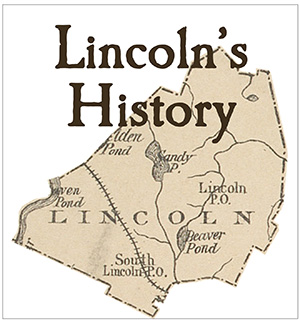

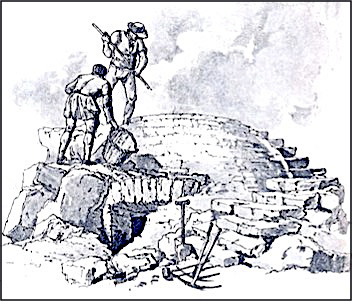

 Show fall spirit for your town and your school by build a scarecrow during the annual Scarecrows at Stonegate fundraiser. Bring a pillowcase for your scarecrow’s head, old clothing (pants with belt loops and long-sleeve shirts – teen to small adult sizes are best), and fun accessories (hats, masks, wigs, etc.) or old Halloween costumes. Stonegate Gardens provides hay, twine, stakes, additional craft supplies, and step-by-step instructions. Choose to display your scarecrow in Lincoln or take it home (display scarecrows will not be returned).Dates are as follows:
Show fall spirit for your town and your school by build a scarecrow during the annual Scarecrows at Stonegate fundraiser. Bring a pillowcase for your scarecrow’s head, old clothing (pants with belt loops and long-sleeve shirts – teen to small adult sizes are best), and fun accessories (hats, masks, wigs, etc.) or old Halloween costumes. Stonegate Gardens provides hay, twine, stakes, additional craft supplies, and step-by-step instructions. Choose to display your scarecrow in Lincoln or take it home (display scarecrows will not be returned).Dates are as follows:


